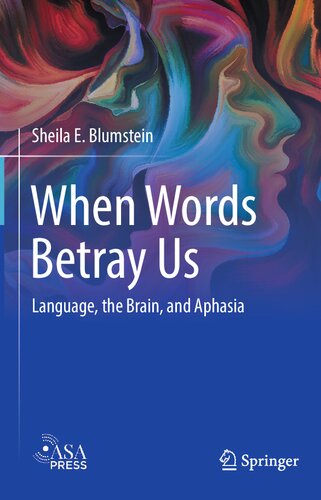

Most ebook files are in PDF format, so you can easily read them using various software such as Foxit Reader or directly on the Google Chrome browser.
Some ebook files are released by publishers in other formats such as .awz, .mobi, .epub, .fb2, etc. You may need to install specific software to read these formats on mobile/PC, such as Calibre.
Please read the tutorial at this link: https://ebookbell.com/faq
We offer FREE conversion to the popular formats you request; however, this may take some time. Therefore, right after payment, please email us, and we will try to provide the service as quickly as possible.
For some exceptional file formats or broken links (if any), please refrain from opening any disputes. Instead, email us first, and we will try to assist within a maximum of 6 hours.
EbookBell Team

4.0
76 reviewsThis book presents a journey into how language is put together for speaking and understanding and how it can come apart when there is injury to the brain. The goal is to provide a window into language and the brain through the lens of aphasia, a speech and language disorder resulting from brain injury in adults. This book answers the question of how the brain analyzes the pieces of language, its sounds, words, meaning, and ultimately puts them together into a unitary whole. While its major focus is on clinical, experimental, and theoretical approaches to language deficits in aphasia, it integrates this work with recent technological advances in neuroimaging to provide a state-of-the-art portrayal of language and brain function. It also shows how current computational models that share properties with those of neurons allow for a common framework to explain how the brain processes language and its parts and how it breaks down according to these principles. Consideration will also be given to whether language can recover after brain injury or when areas of the brain recruited for speaking, understanding, or reading are deprived of input, as seen with people who are deaf or blind. No prior knowledge of linguistics, psychology, computer science, or neuroscience is assumed. The informal style of this book makes it accessible to anyone with an interest in the complexity and beauty of language and who wants to understand how it is put together, how it comes apart, and how language maps on to the brain.